Transitioning SMA Patients From Older Wheelchairs To Newer Wheelchairs
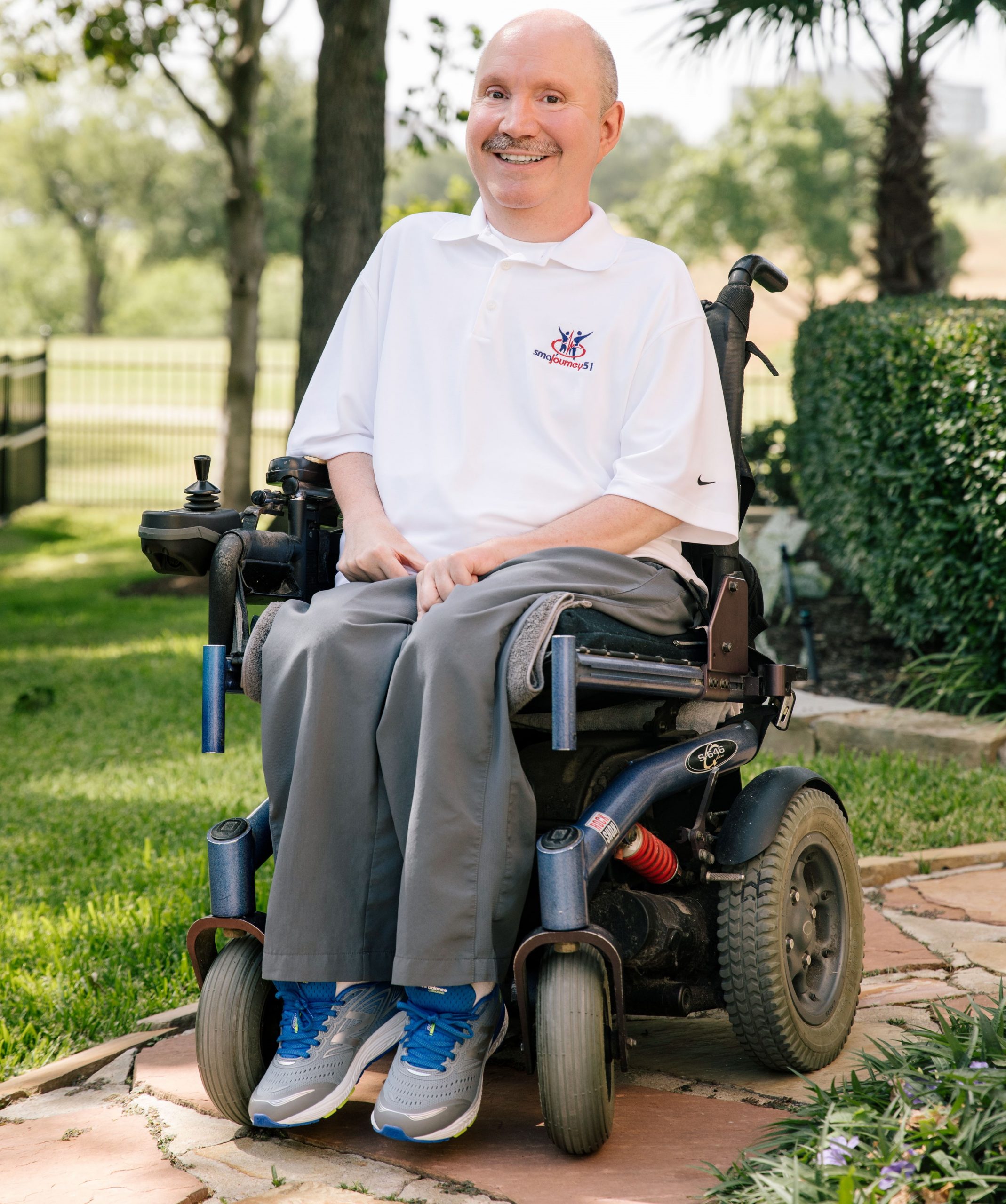
Transitioning from one wheelchair to another can be especially difficult for people with SMA. Most of the time, it is suggested that you receive a new wheelchair approximately every five years. As for my patient who has SMA, he has been in the same wheelchair for nineteen years. There have been many things change, and many upgrades made on wheelchairs that will possibly make it a more difficult transition for Michael as he adjusts to his new chair. For example, he has been in a sling seat for the past fifty-five years and is now having to transition to a hardpan seat. Although this will be beneficial, as it will maintain a more even base for his pelvis and hip alignment, it will most likely make him very sore at the beginning of the transition. This will possibly affect his physical therapy weekly routine because he will probably require more frequent stretching on the therapy table, which he has been receiving every other week.
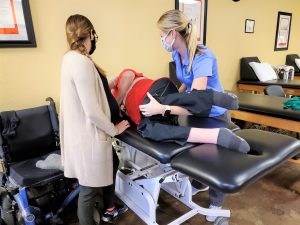
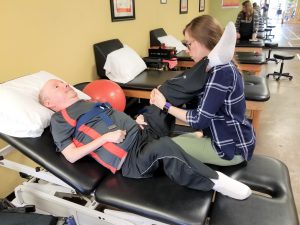
Another change he will have to endure in the new wheelchair is the seat will be about an inch wider than his previous chair. This will most likely cause Michael to feel more unsteady than he did in his old chair, secondary to the lack of comfort and support were given by a more narrow seat. This could also affect his balance due to the same reason. Michael will most likely feel a little unsteady during his seated exercises, which will make them more challenging. These exercises typically involve resistance bands and AROM in different directions with his cervical, thoracic, and lumbar regions.
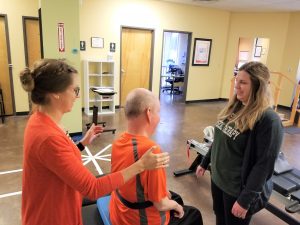
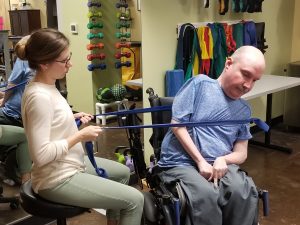
Another new feature this chair will have is it will be able to raise 12 inches. With this, Michael will have more access while out in the community to performs activities such as sitting at different tables at restaurants, as well as the ability to reach items on different levels that may have previously been out of his reach.
The new wheelchair will also have a feature that will allow him to recline back. This will help him perform weight shifting during the day independently. This is important to decrease the risk of pressure ulcers, especially on bony prominences, although Michael has had very few pressure sores throughout his time in a wheelchair. This feature will also allow for him to incline his feet, which will help with circulation. Michael struggles with significant pitting edema in his lower legs and feet. Being able to raise his feet several times a day will significantly reduce that problem. Along with reclining back, this chair also has a function that allows him to lay fully supine.


Thankfully, my battle with Michael not having footrests will finally come to an end. He will have footrests on this chair, which will likely improve his balance and feeling of steadiness, secondary to having a base of support underneath him. The extra support could potentially allow him to lean forward and reach for items when he gains more range of motion in his ankles. The increase in motion in his ankles will allow for him to place his feet more flatly against his feet rests, which will increase the support they will provide.
This new chair will also have a function called assisted reach. This will allow Michael to lean forward in his chair, up to 21 degrees. The assisted reach will allow him to lean forward more than he would be able to without assistance, to increase his access to different items. This will also be of good use in therapy to lean him forward to different levels and attempt to hold the position to engage his core muscles.
Over the next couple of months, we will be assessing Michael in his new chair and addressing what his new goals and realistic developments will be. While observing Michael in his new chair, we may make some recommendations as to what changes may need to be made to better accommodate him in his new chair. We will discuss with Michael how he can use all of these features, and how he can better perform exercises at home with his new chair.
======================== Patient Perspective ========================

It’s hard to teach an old dog new tricks. This is a phrase that I heard while growing up, but little did I know that this phrase would actually describe me. Sitting in the same style wheelchair for the past fifty-five years has been comfortable, but with comfort, came some problems that will make my transition from my older style chair to my new one more difficult. Sitting in a wheelchair with a sling seat has caused my hips to rotate, which has not only caused its share of problems, it’s also the root cause for the severe muscle and nerve damage in my right hip.
My current wheelchair is nineteen years old, and it basically has four wheels, two motors, and a joystick. Its basic function was to get me from point A to point B. My new chair will have Bluetooth capabilities, a USB connection, and a myriad of other technological advances that I never would’ve dreamed of having. I’ve always been one to shy away from all of the bells and whistles, but having a wheelchair that’s more technologically advanced will allow me to do more for myself and be less reliant on others.
I count my blessings because I have physical therapists that are not only capable of helping me make this transition, they truly care about my well-being. They’re willing to do whatever it takes to keep me comfortable, and their dedication to service means so much to me. They understand that my physical therapy routine will probably have to change for a couple of months, and being able to adapt to new situations and challenges, is what makes them “Rock Stars” in my eyes. I never feel uncomfortable about telling them the problems that I’m going through because I know that they will do whatever it takes to help me.



